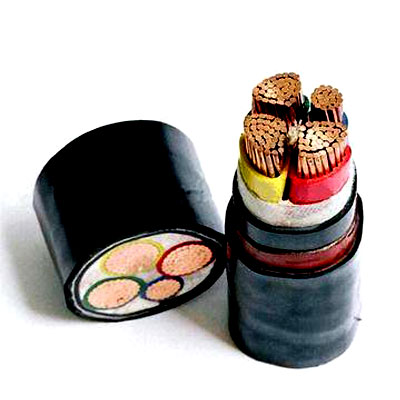Structural composition of wires and cables: Wires and cables are composed of conductors, insulation layers, shielding layers, protective layers, filling structures and tensile components.
1. Conductor.
Conductor is the most basic structural component of wire and cable products for current or electromagnetic transmission. Conductor is the abbreviation for the conductive core of wires and cables, which is made of non-ferrous metals with excellent electrical conductivity such as copper, aluminum, copper-clad steel, and copper-clad aluminum.
2. Insulating layer.
The insulation layer refers to the component that covers the periphery of the conductors of wires and cables and plays the role of electrical insulation. It can ensure that the current transmitted by wires and cables does not leak to the outside world, ensures the normal transmission function of wires and cable conductors, and ensures the safety of external objects and people. Wire and cable conductors and insulation layers are the two most basic components of wire and cable products.
3. Shielding layer.
The shielding layer is a method that isolates the electromagnetic field in the wire and cable product from the electromagnetic field of the outside world or isolates different conductors within the wire and cable product from each other. It can be said that the shielding layer is a kind of “electromagnetic isolation screen”.
4. Protective layer.
When wire and cable products are installed and operated in different environments, they must have components that protect the wire and cable product as a whole, especially the insulation layer, which is the protective layer.
Because wires and cables require insulating materials to have excellent electrical insulation properties, they often cannot take into account their ability to protect the outside world. Therefore, the resistance to various external forces, corrosion resistance, anti-aging and fire resistance are often seriously insufficient, and the sheath is often seriously insufficient. Layer is the key to remedying such problems.
5. Filling structure.
Filling structure is a special enough component for some wires and cables, such as xlpe power cable and control cable. This type of wires and cables are multi-core. If a filling layer is not added after being cabled, the shape of the wires and cables will be uneven and there will be large gaps between the conductors. Therefore, it is necessary to add a filling structure when the wires and cables are cabled, so that the outer diameter of the wires and cables is relatively rounded to facilitate wrapping and sheathing.
6. Tensile components.
Including steel core aluminum stranded wire, overhead stranded wire, etc. In the wire and cable products developed in recent years that require multiple bends and twists, tensile components play a major role.
Email: sales@zhongweicables.com
Mobile/Whatspp/Wechat: +86 17758694970
Post time: Nov-07-2023





